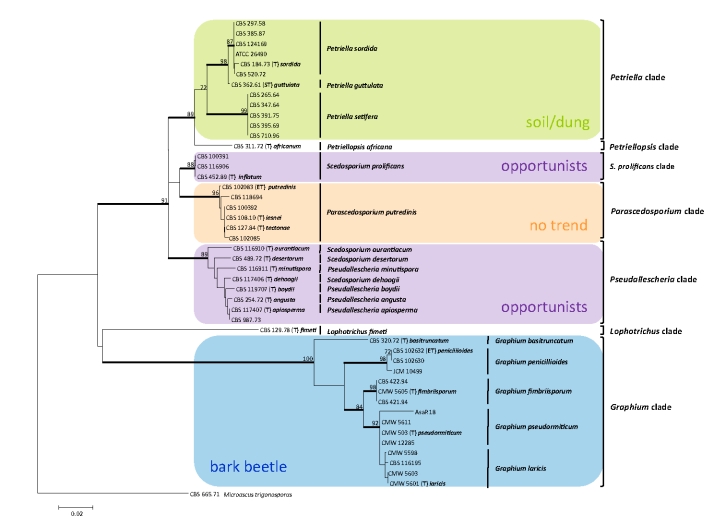Fig. 1.
Overview of treated members of Microascales including strains of Graphium, Pseudallescheria, Petriella, Lophotrichus, Petriellopsis, and Parascedosporium. The maximum likelihood ITS tree was calculated with 200 bootstrap replicates. Strains shaded in green represent strains isolated from dung, strains in shades of purple represent those with medical relevance and/or associated with hydrocarbon-polluted soil, and those shaded in blue are associated with trees and/or bark beetles, while strains shaded in orange do not have any apparent ecological trend. Bootstrap-supported branches (>80 %) are in bold and bootstrap values are indicated. Ex-type strains are marked with a bold (T), epitypes are marked with bold (ET), and syntypes with a bold (ST) after the strain number. The name used in the first description is given in italic bold type.

